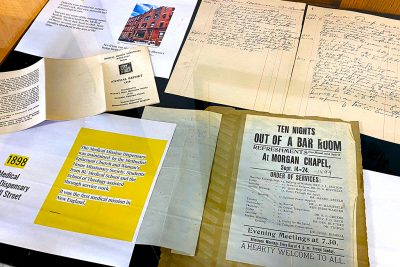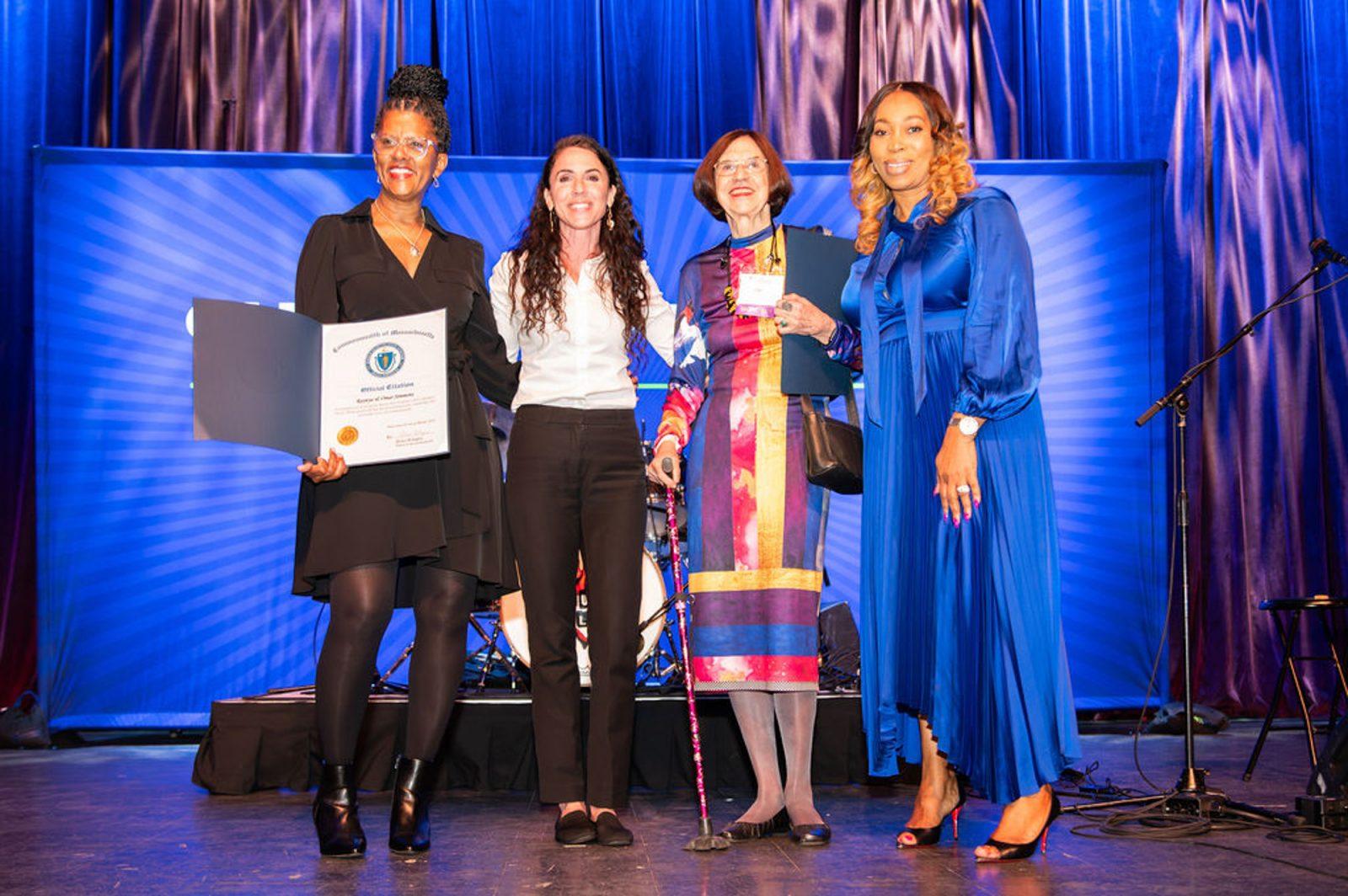The Boston University Diversity & Inclusion Learn More Series focused this year on raising awareness about disabilities and the impact of ableism through panels, discussions and exhibitions. As part of the series, a year-long exhibit that began on Sept. 7 in the School of Theology focused on Boston University’s own history with disability support and representation.

For D&I’s Learn More series, the STH is holding an exhibit named “Along the Road to Accessibility: BU Disability History Exhibition,” which displays cultural artifacts of BU’s historic contribution to creating a more inclusive community.
The exhibit, which can be viewed in the STH Library or virtually online, also includes a self-guided walking tour to visit historic and symbolic buildings on campus and around Boston. Students, faculty and staff visiting the exhibit can view placards and relics that depict how resources for communities with disabilities have changed since the 19th century.
Kara Jackman, the archivist and preservation librarian at STH, curated the artifacts in the exhibit. She said she believes that reflecting upon BU’s history is important to advance effective change.
Jackman said that there’s a negative stigma surrounding disabilities, so the exhibit aims to highlight positive stories and services created to make a more accessible campus.
“I’m trying to lift up positive stories, but there’s a lot of bad stories too,” Jackman said. “My goal is to counteract that with positivity and kindness and revealing to people all the amazing things and the amazing people that have either taught here or worked here.”
Jackman, also the chair of the Staff and Faculty Extend Boston University Disability Support, or SAFEBUDS, said that the exhibition displays SAFEBUDS’s efforts at creating a support network for students and faculty affected by a physical or mental disability.
“What we’re trying to do is just have a place for people to come, that are disabled, or have disabled family members, or have people that are ill in their lives, and just have a space for them that is welcoming and kind,” Jackman said.
The exhibit features information about historical figures who founded landmarks on campus, such as the founder of Sargent College, Dr. Dudley Allen Sargent. Other notable accomplishments based in Boston are also displayed. Alexander Graham Bell, who worked with deaf students to help communicate, is highlighted in the exhibit, which included an early telephone model and his roots in Boston.
The exhibit also highlights the signing of Section 504 of the Rehabilitation Act in 1973 — a U.S. Department of Education act that protects the rights of those with visible and invisible disabilities — and the 1975 founding of the BU Disability and Access Services Department.
Rick Seaholm, the SAFEBUDS member on the leadership board, said the exhibit provides the history of how services for communities with disabilities have developed over time in Boston since 1848.
“The exhibit … lets you see the trajectory of how disability has been a focus throughout BU’s history, both in relation to cultural trends with ADA and so on,” Seaholm said, “but also in ways that BU went out on its own and did things that were notable in their own time.”
Seaholm added the exhibit “provides a context for disability as a whole,” which can provide a comprehensive look at the disabled community and services offered for them at BU through its history.
Megan Sullivan, an associate professor at the College of General Studies, said it’s important to bring awareness to the challenges that individuals with disabilities face as classroom learning should be equitable for all students.
“I want my students to understand constructions of disability in our world and in our writing, and I want them to read writing by disabled writers,” Sullivan said.
Sullivan, also assistant provost ad interim for academic assessment, said assessing a student’s learning abilities and patterns is an important part of accessibility at BU.
“I want to make sure that the exhibition comes into my role, just simply as a reminder that we always have to think about disability whenever we think about education,” Sullivan said.
Jackman encourages students, faculty and staff to become active members in the project by submitting their own personal experiences that feature the ways BU helps the disabled community.
Students and faculty can also view the exhibit online. The online version features the timeline, interactive maps, and QR codes of the university’s history with helping the disabled community.
Jackman said the exhibit aims to uplift the people who persevered despite their hardships.
“I want to change the narrative and hopefully by lifting up these stories we can kind of counterbalance that [negativity],” Jackman said. “I want to show the students that.”

























































































































